In suburban gardens the Forsythia and Quince are flowering and the Magnolia buds are just bursting. It was a sunny spring-like day, but with ominous clouds over Parkgate.
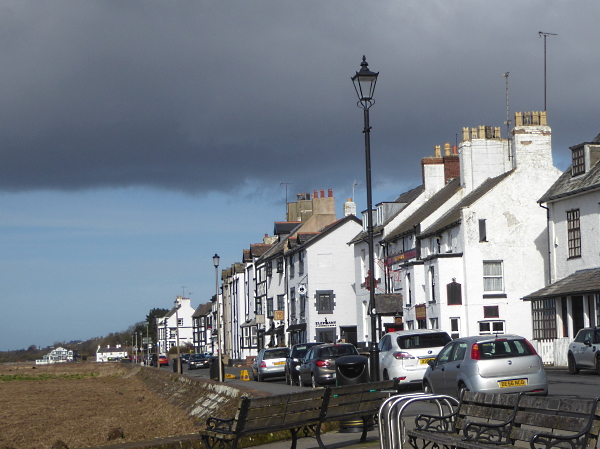
In the pools on the marsh were Mallard, Black-headed Gulls, Canada Geese, Moorhen, Redshank, Teal and Oystercatchers. A Pied Wagtail flew in near the wall, and a Little Egret flew by, now a common sight at Parkgate. Less common was a Great White Egret, stalking about like a Heron.
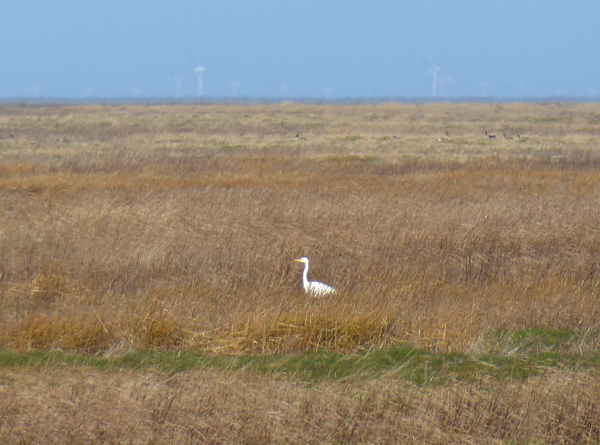
A squall blew in from the Welsh side, bringing cold gusts of driving rain, but it went off just as we reached the picnic tables at the Old Baths. After lunch, we took the path to the Wirral Way and walked to Neston.
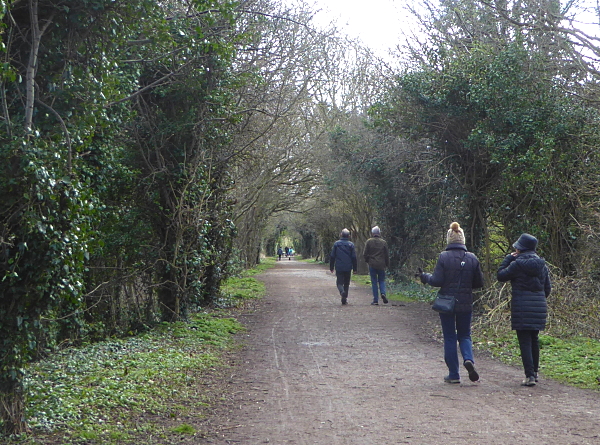
About twelve Curlew flew up from adjacent field, and passed overhead, calling. At one of the few gaps in the thick hedges we were able to look into a stubble field, which must have had plenty of spilled grain, because there was a flock of Linnets, several Carrion Crows, a Chaffinch, a Mistle Thrush and two male Pheasants. Dunnocks were sitting up high and singing, not skulking in the undergrowth as they usually do, and a succession of Robins sang us along.
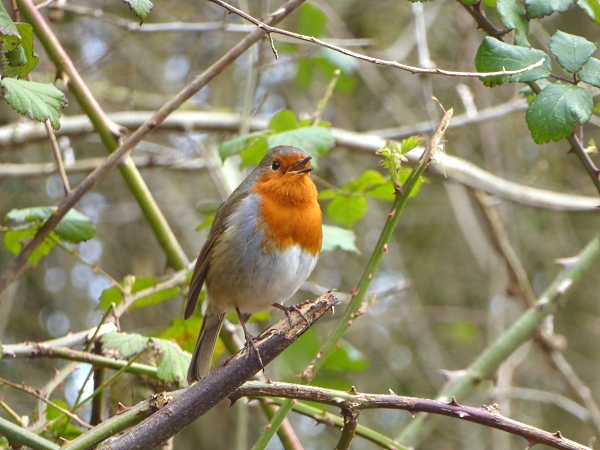
Signs of spring flowers were pushing up. Wild Arum and Wild Garlic are just leaves yet, but there were a few early flowers of Hogweed, Cow Parsley and Lesser Periwinkle. The first of the Lesser Celandine were showing their bright yellow blooms.
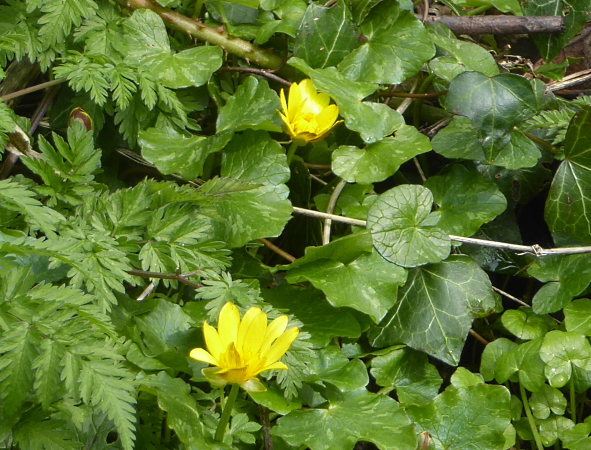
The best plant of the day was something of a mystery. We spotted several clumps of pale lilac flowers, very low to the ground, rather like crocuses, but the flowers were hooded. There were five or six clumps of these odd flowers, all in the same few yards of verge, but no more anywhere else.
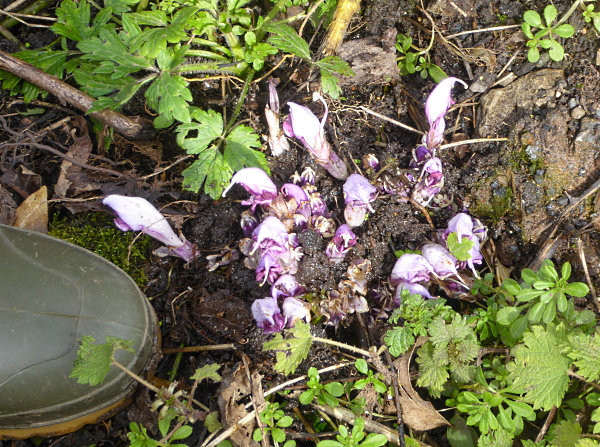
I think it was Purple Toothwort, Lathrea clandestina. It is parasitic on the roots of Willow, Alder and Poplar and likes damp, shady places. It isn’t native, it’s a “neophyte”, and has been in the UK for over a century. Still fairly uncommon, although the Wirral is one if its known haunts. It was not far south of the Brooklands Road bridge, on the east side of the Wirral Way.
We emerged from the path behind the church of St Mary and St Helen, Neston. One grave was planted with Forget-me-Not, which is quite appropriate but we didn’t know what to make of the one planted with Wild Garlic. It made us think of Vampires!
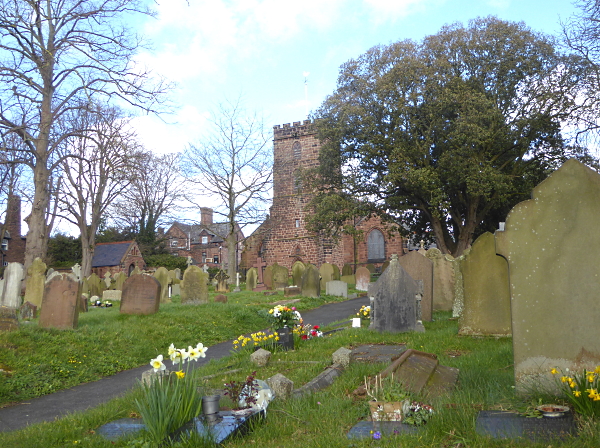
Opposite the bus stop is this wall sign for the Neston Female Society, founded 1814. It seemed appropriate for International Women’s Day.
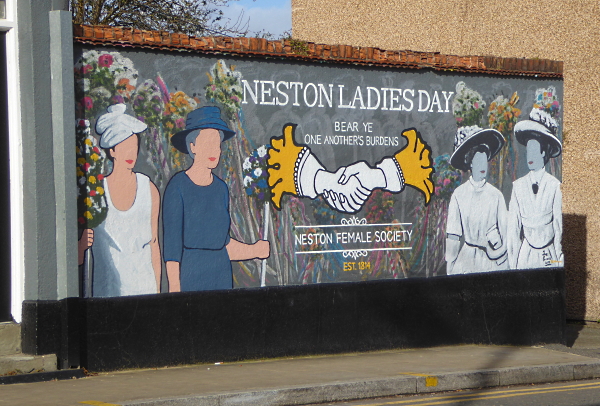
Public transport details: Bus 487 from Sir Thomas Street at 10.29, arriving Parkgate Donkey Stand at 11.22. Returned on 487 from Neston at 3.44, arriving Liverpool 4.20.
Next few weeks: No more Sunday walks until further notice.
